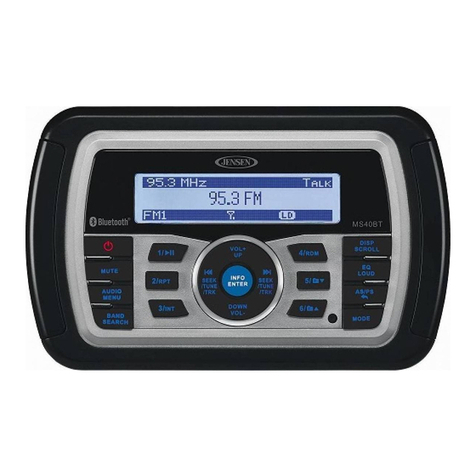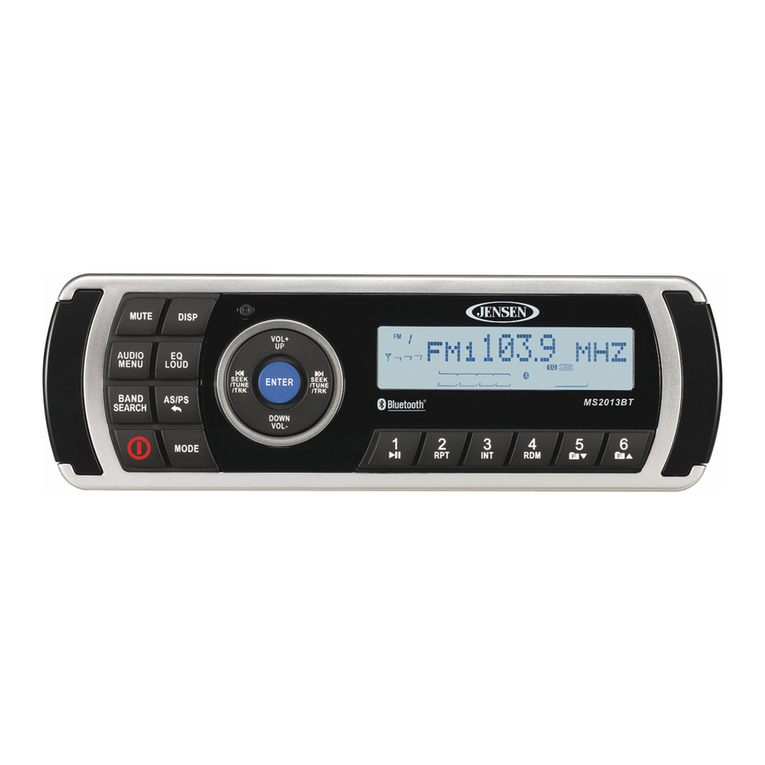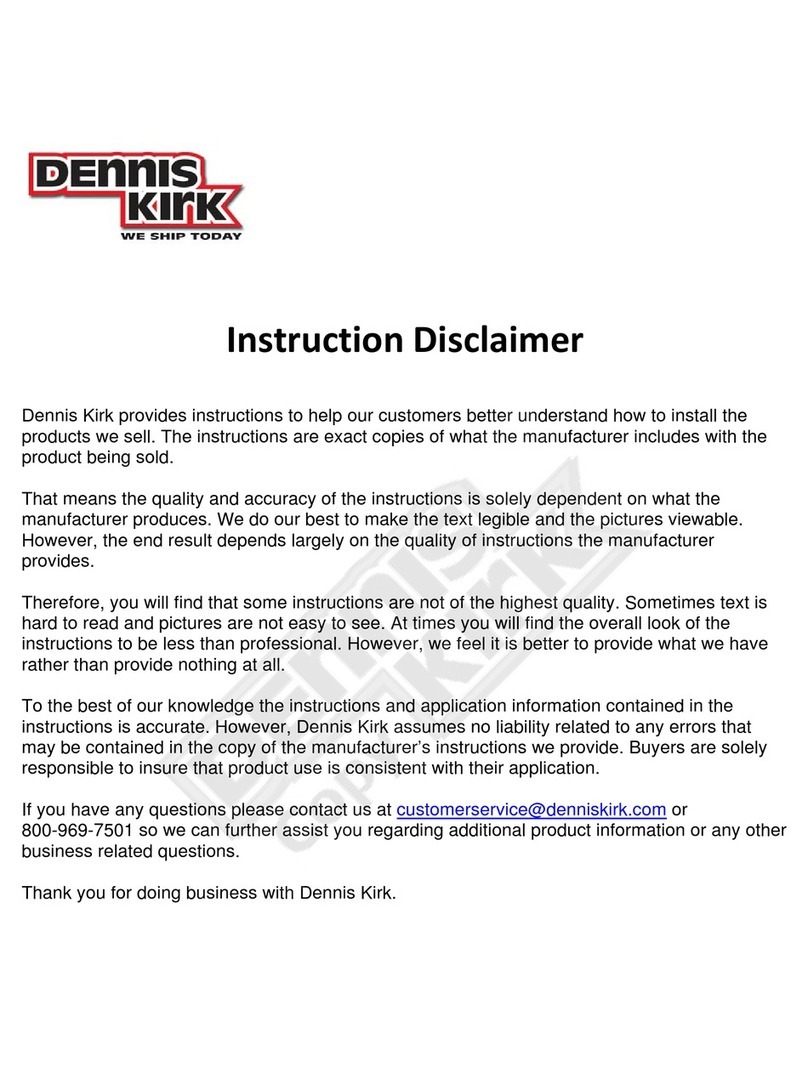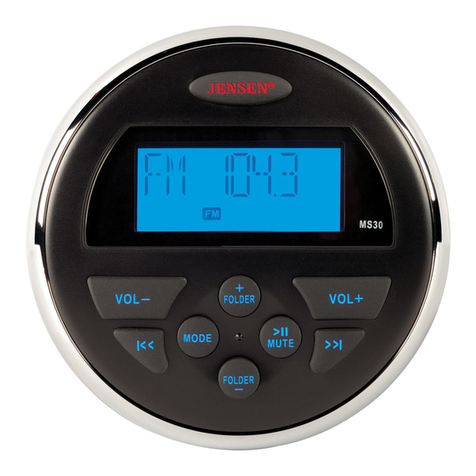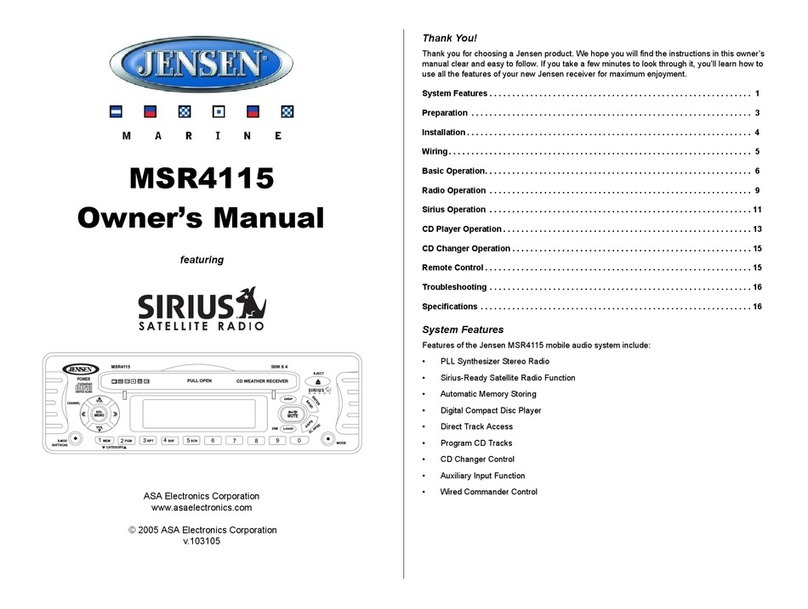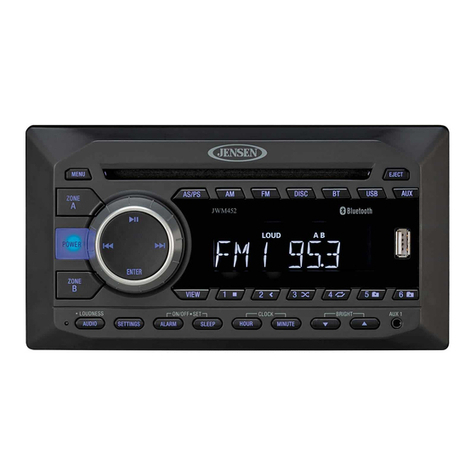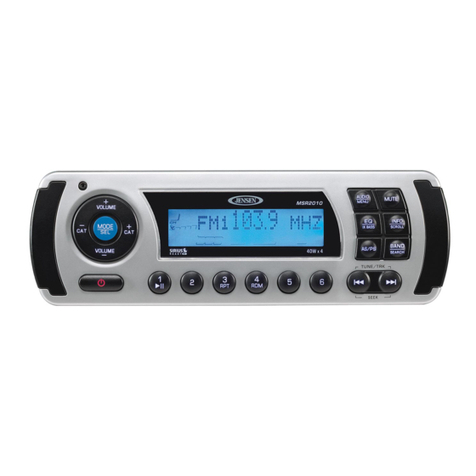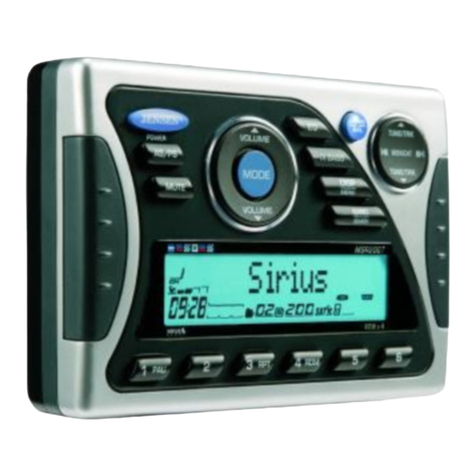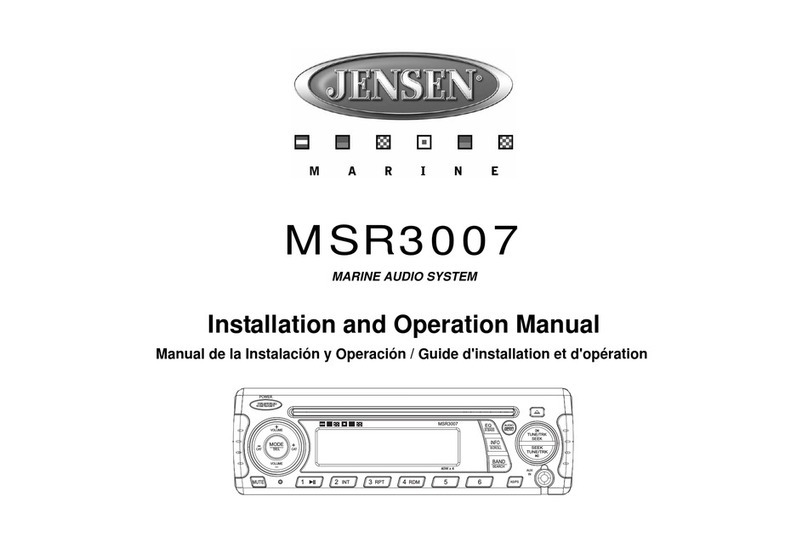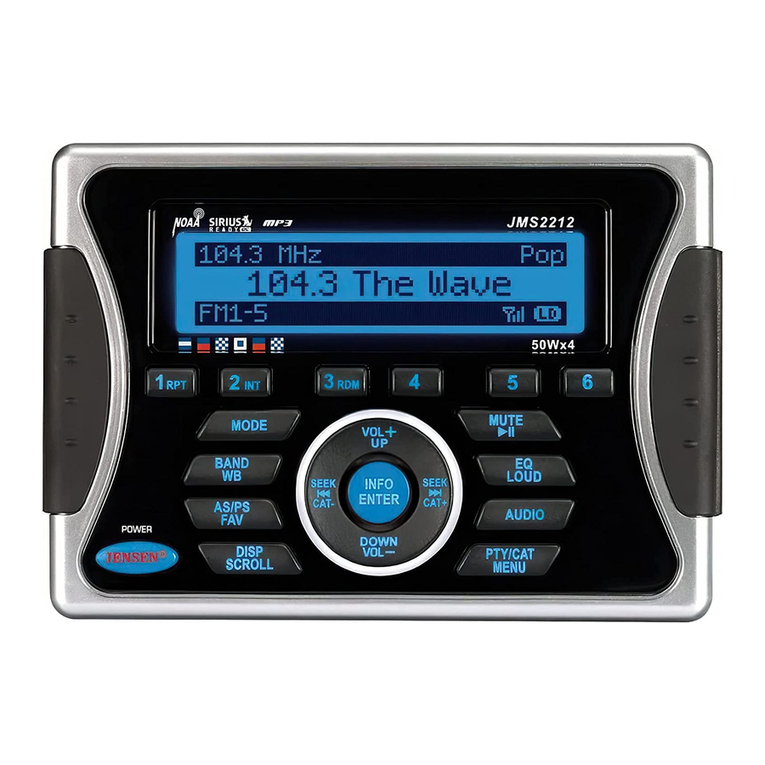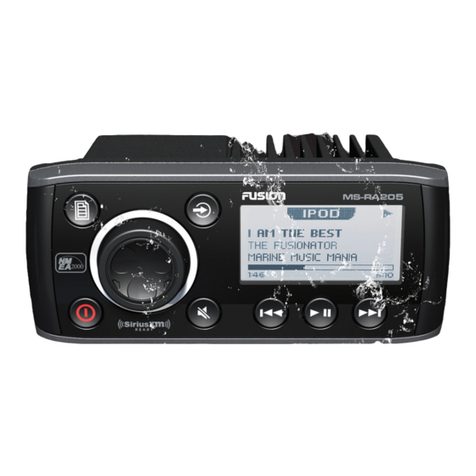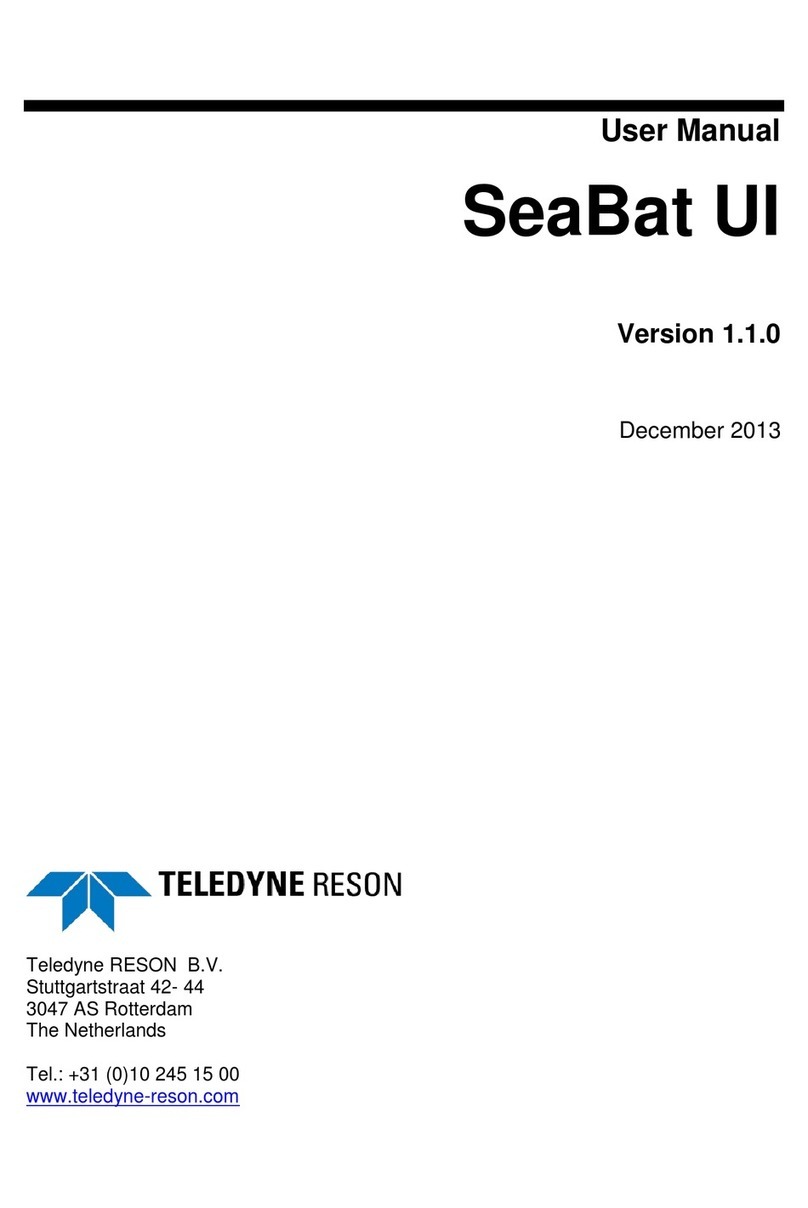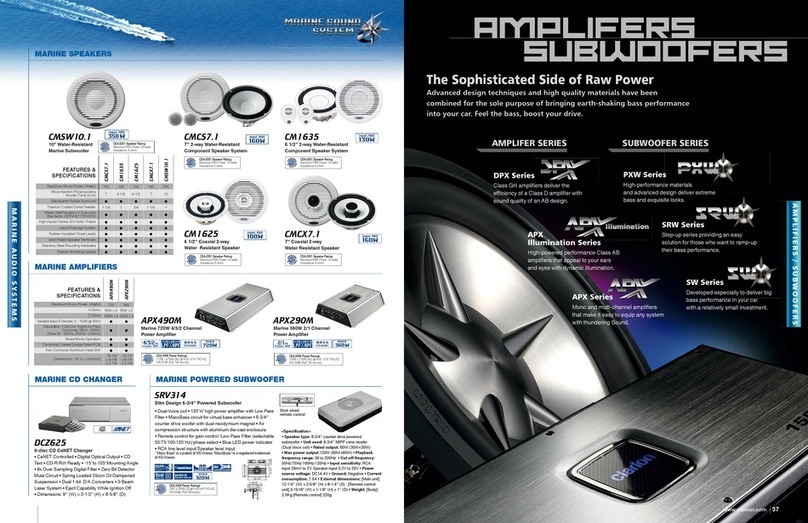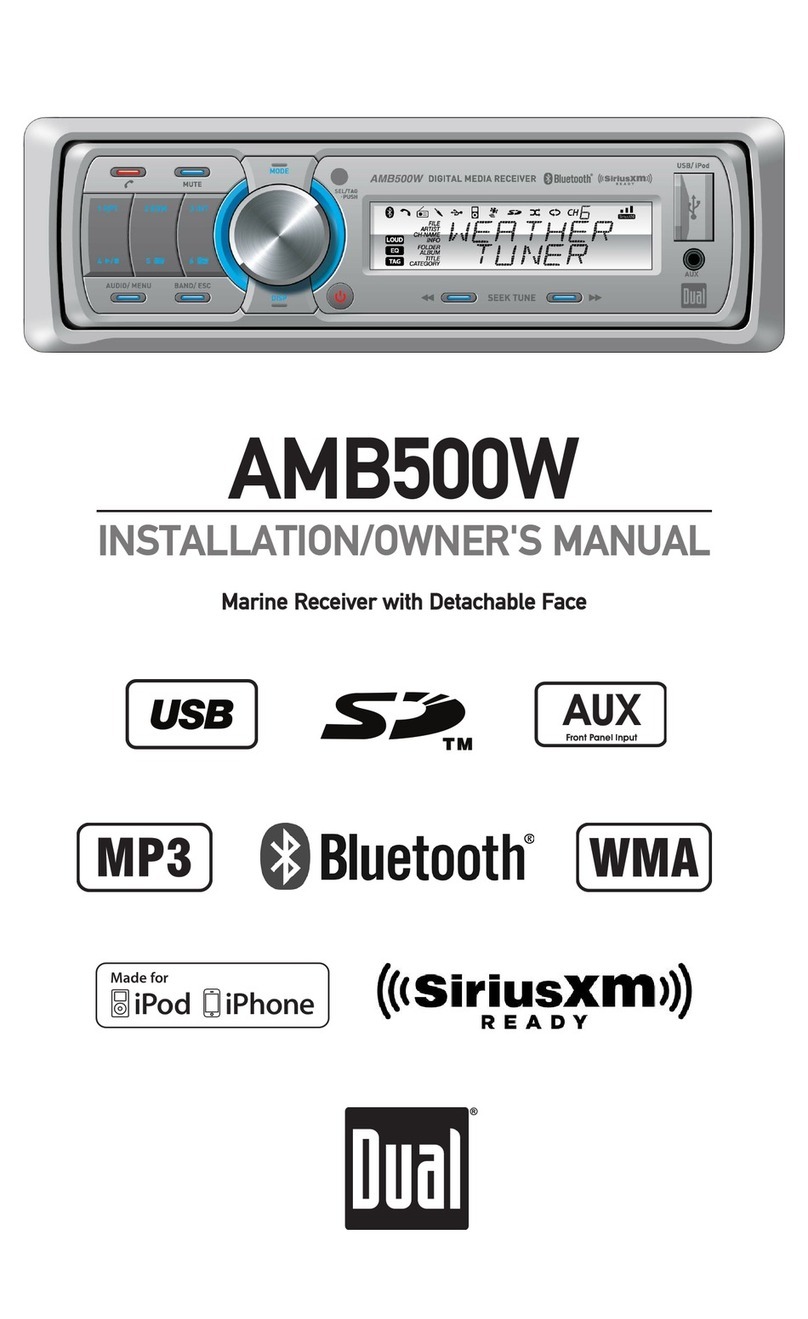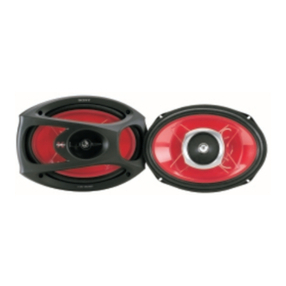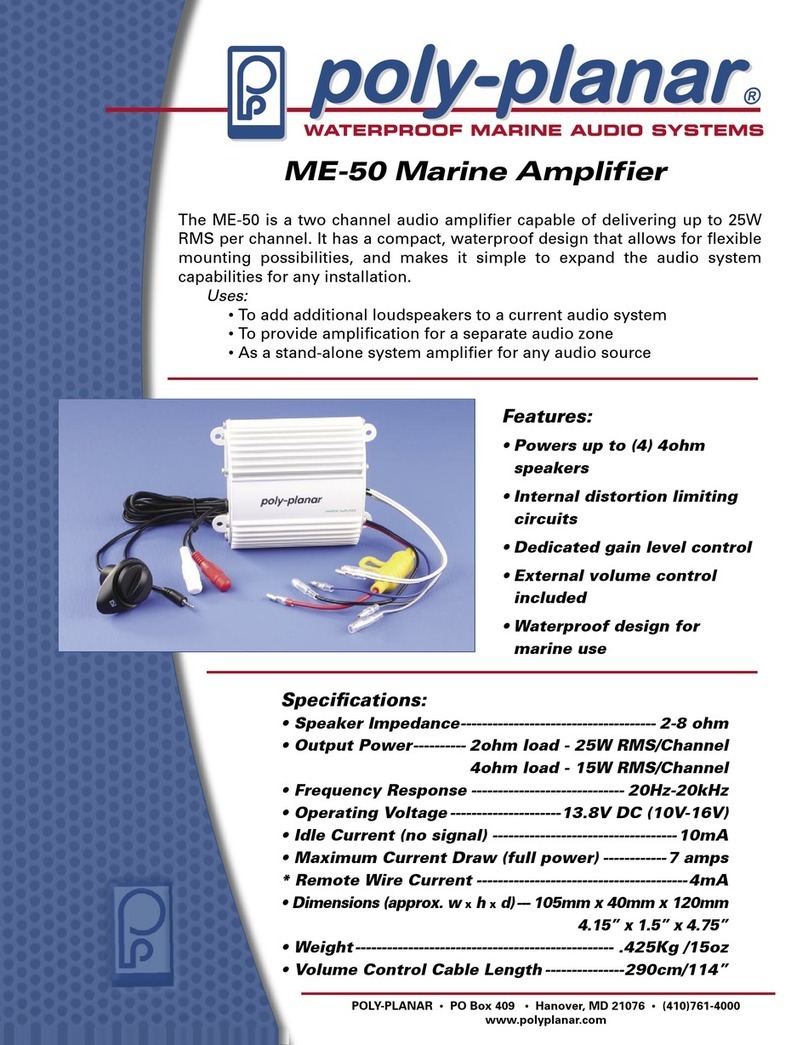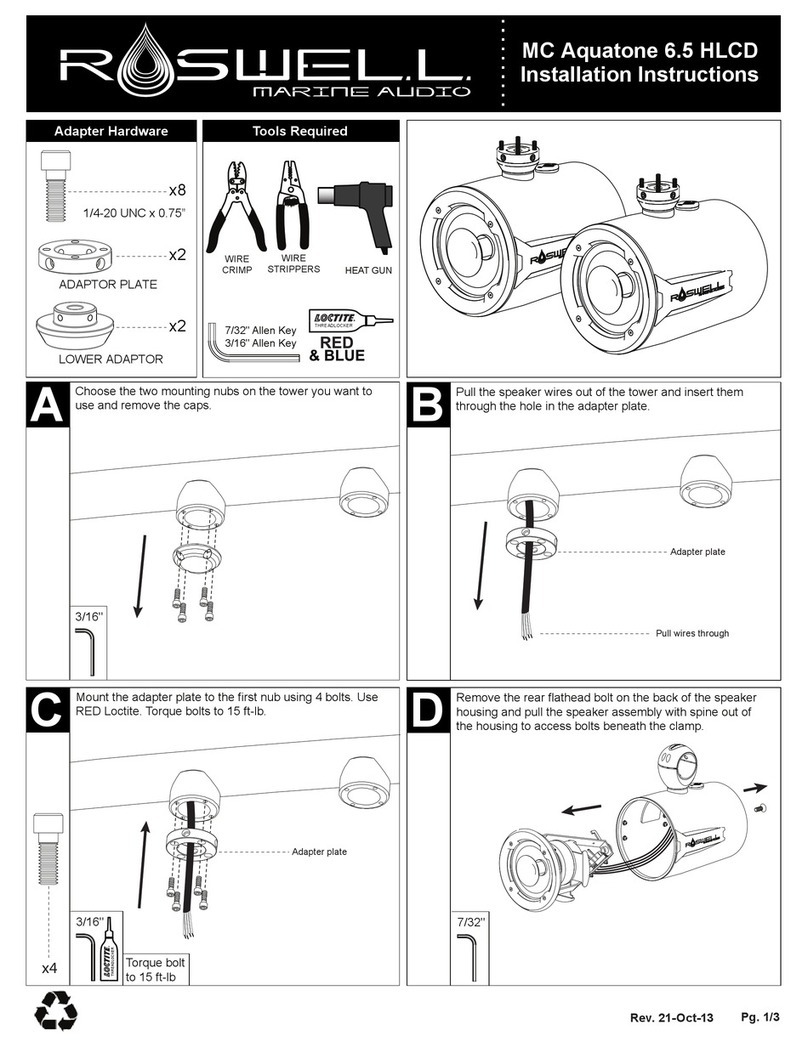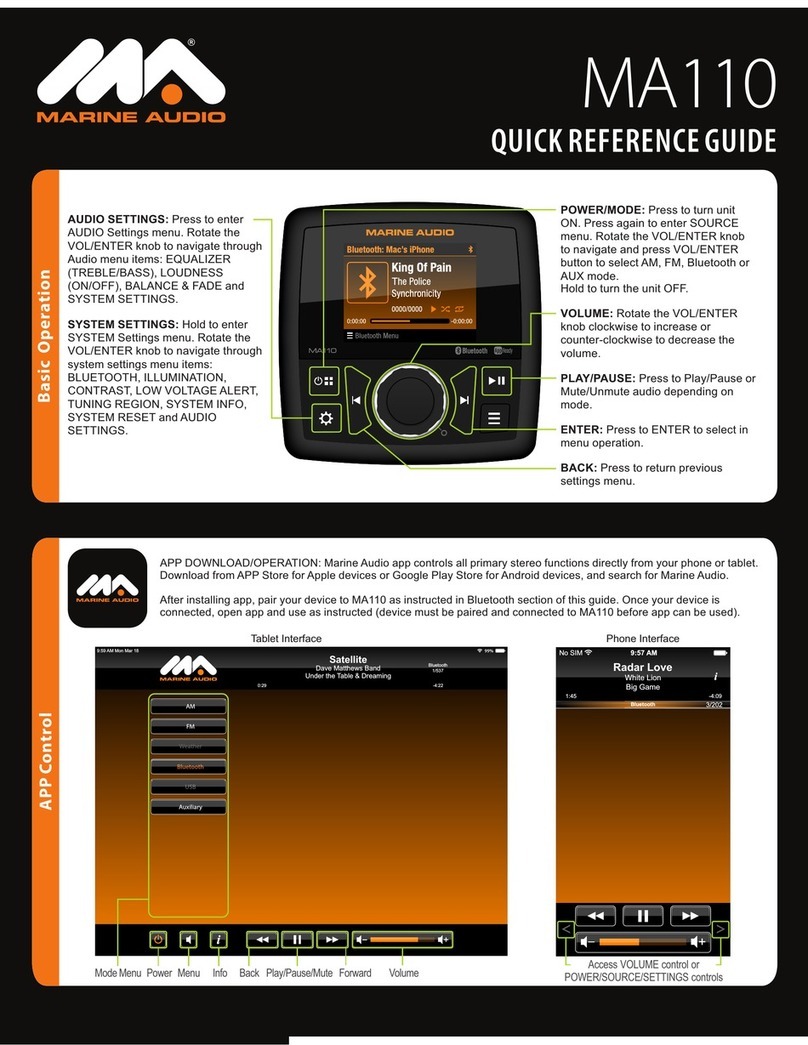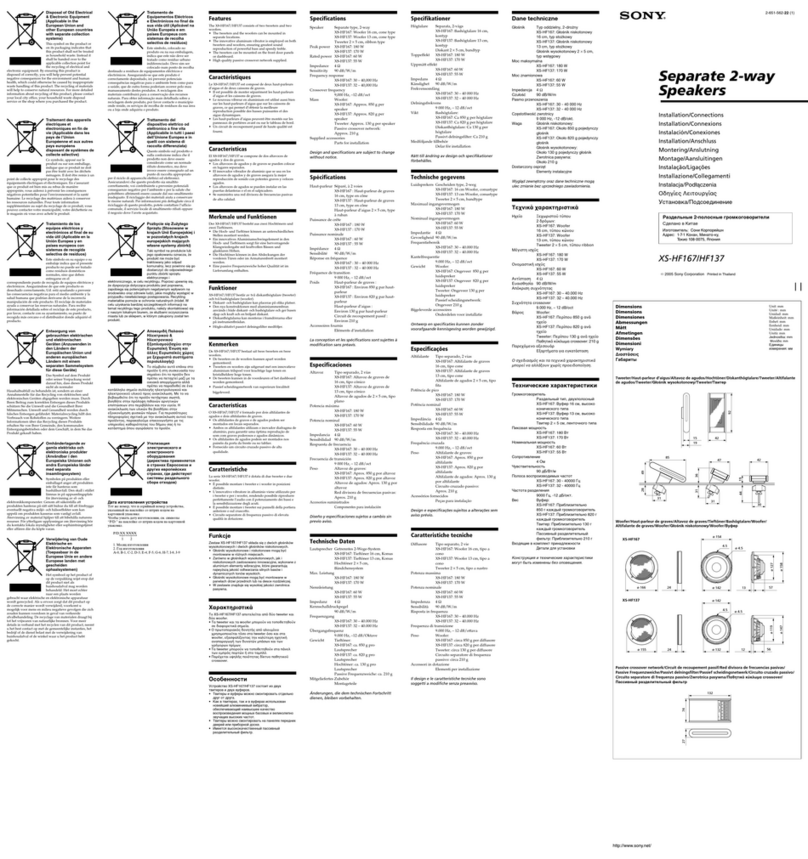MSR2007
6
System Menu
1. Press and hold the AUDIO button (3) for more than 3 seconds to enter the system menu.
“MENU” will appear on the display, followed by the first menu item, “CONTRAST.”
2. Press the TUNE/TRK >>| or |<< button (19, 18) or press the AUDIO button repeatedly to
navigate the system menu and select the desired item.
3. Press the VOLUME +/- buttons (2) to adjust the selected menu item.
4. Press the AS/PS button to return to the previous operation immediately or wait for 5
seconds to return automatically.
The following items can be adjusted:
• CONTRAST (0 – 10): Set LCD contrast.
• LOW BATT (ON/OFF): Monitor voltage on ACC line.
• AREA (USA/LATIN/EUROPE): Set frequency spacing for various regions.
• VOL PGM (0 – 46): Select an automatic turn-on volume.
• BEEP TONE (ON/OFF): Turn the audible beep ON/OFF (heard when functions/buttons
are selected). NOTE: Beep tone off will not affect LOW BATT audible tone .
• RESUME: Return the EEPROM to factory default set up values and reset the Sirius Tuner
Settings. "Yes" will blink on the LCD to confirm. Press MODE to select.
LOW BATTERY Operation
If LOW BATT is set to “ON”, a alarm will s ound (8 beeps every 30 sec) when the voltage drops
to 10.8V (+/- 0.03V). A visual warning (LOBA) will appear flashing (8 fl ashes every 30 sec) in
the lower left corner of the LCD display.
NOTE: “OFF” is the default setting for LOW BATT. If the audio is muted or the volume is
set to 0, the audible beep will not be heard.
Equalizer
Press the EQ button (11) to turn on the equalization function and select between five pre-
defined bass and treble curves: OFF > POP > JAZZ > CLASSIC > BEAT > ROCK.
iX-Bass
Press and hold the EQ/IX-BASS button (11) toggle loudness on/off. When listening to music at
low volumes, this feature will boost the bass range to compensate for the characteristics of
human hearing.
Auxiliary Input
To access an auxiliary device:
1. Connect the portable audio player to the AUX IN cables on the back of the tuner box.
2. Press the MODE button (4) to select Aux In mode.
3. Press MODE again to cancel Aux In mode and go to the next mode.
Liquid Crystal Display (LCD)
The current frequency and activated functions are shown on the LCD panel (23).
NOTE: LCD panels may take longer to respond when subjected to cold temperatures for
an extended period of time. In addition, the visibility of the numbers on the LCD may
decrease slightly. The LCD display will return to normal when the temperature increases
to a normal range.
Scroll
When the information is too long to be displayed on the LCD, press and hold the INFO/
SCROLL button (12) to view the entire title. The information will scroll twice and then return to
abbreviated text.
Quick Exit Hot Key
In the following modes and conditions, press the AS/PS button < 3 seconds to quickly exit the
current operation without waiting for the system default time out:
• System menu operation
• Searching mode
• Audio menu operation
• LOCAL: this model favors access to local stations whose signals are much stronger;
thereby improving radio reception.
• DISTANT: this is terminate the local receive mode to normal receive mode.
